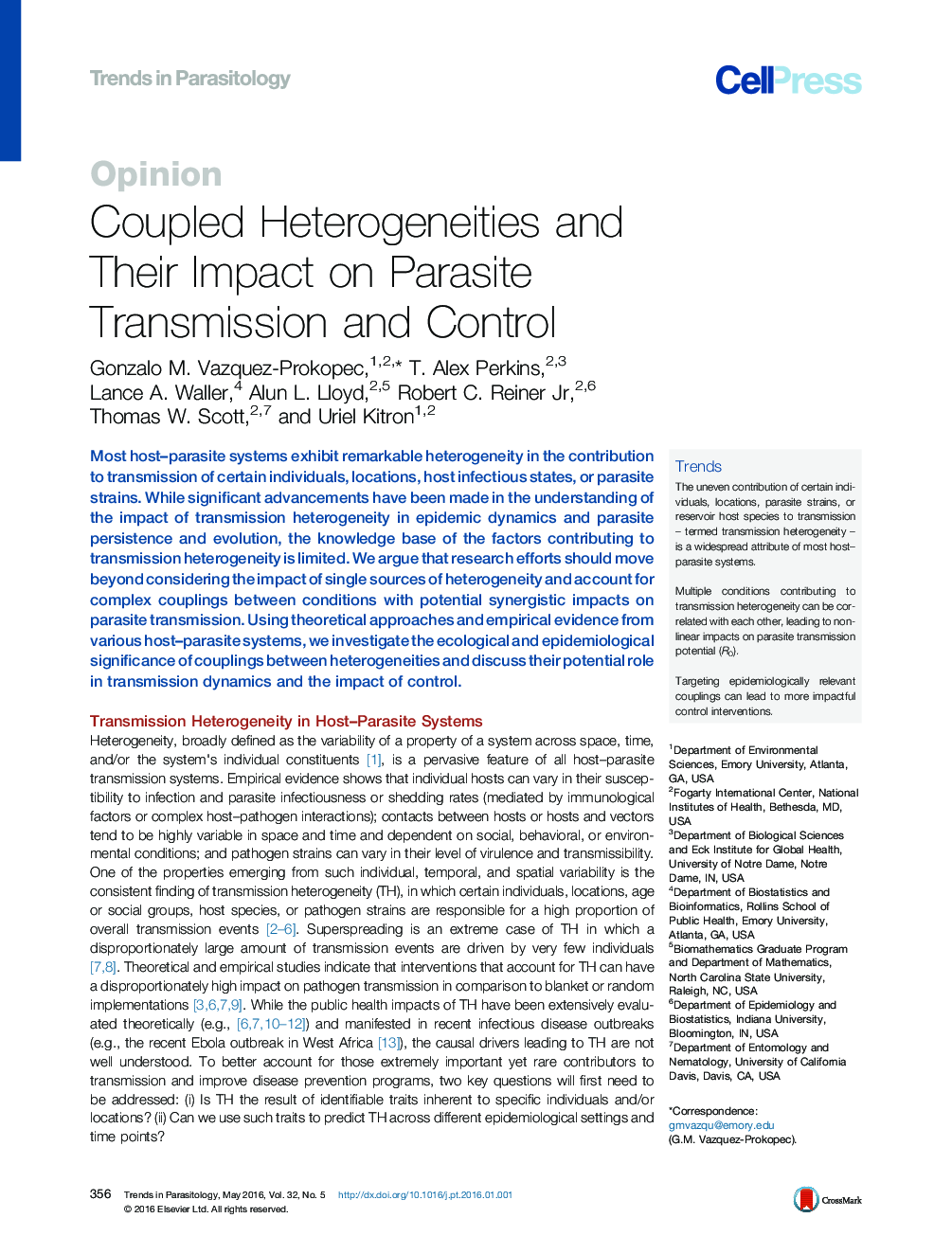| Article ID | Journal | Published Year | Pages | File Type |
|---|---|---|---|---|
| 3422919 | Trends in Parasitology | 2016 | 12 Pages |
Most host–parasite systems exhibit remarkable heterogeneity in the contribution to transmission of certain individuals, locations, host infectious states, or parasite strains. While significant advancements have been made in the understanding of the impact of transmission heterogeneity in epidemic dynamics and parasite persistence and evolution, the knowledge base of the factors contributing to transmission heterogeneity is limited. We argue that research efforts should move beyond considering the impact of single sources of heterogeneity and account for complex couplings between conditions with potential synergistic impacts on parasite transmission. Using theoretical approaches and empirical evidence from various host–parasite systems, we investigate the ecological and epidemiological significance of couplings between heterogeneities and discuss their potential role in transmission dynamics and the impact of control.
TrendsThe uneven contribution of certain individuals, locations, parasite strains, or reservoir host species to transmission – termed transmission heterogeneity – is a widespread attribute of most host–parasite systems.Multiple conditions contributing to transmission heterogeneity can be correlated with each other, leading to nonlinear impacts on parasite transmission potential (R0).Targeting epidemiologically relevant couplings can lead to more impactful control interventions.
